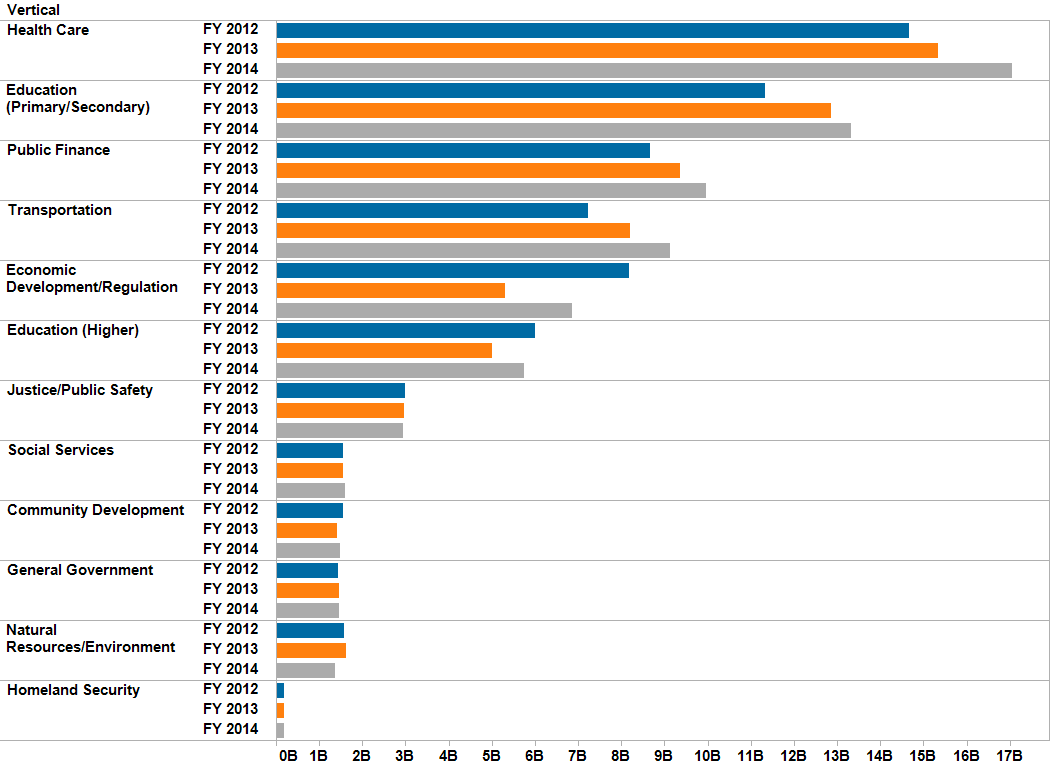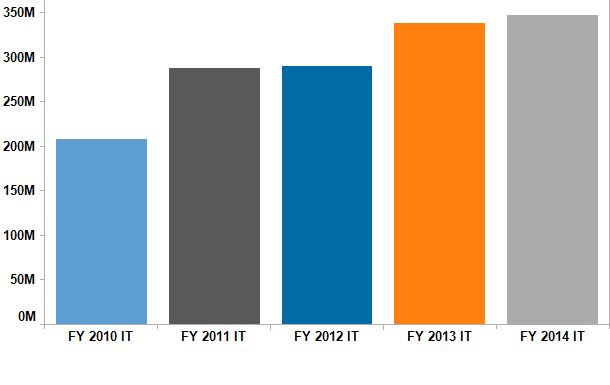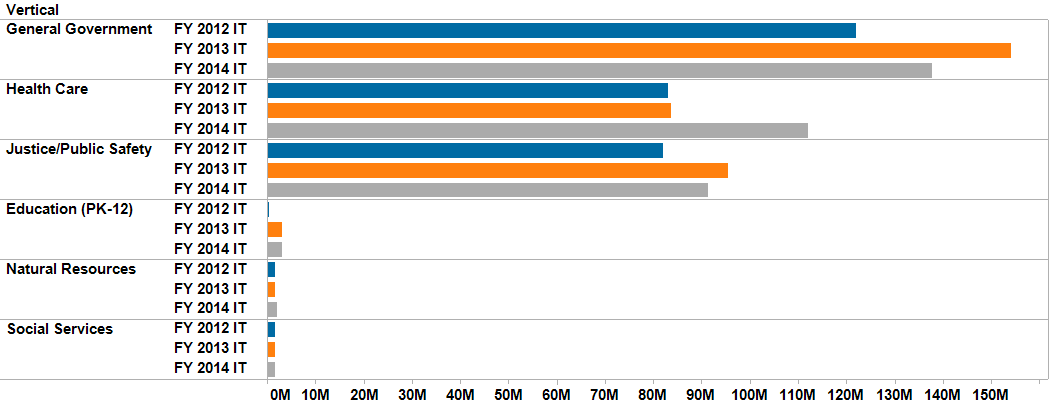New Jersey FY 2014 Budget Analysis: Superstorm Sandy just one ingredient in mounting budget problems
Published: April 04, 2013
BudgetElectionsGeneral Government ServicesGovernorHealth CareJustice/Public Safety & Homeland SecurityPublic Finance
Of all the budgets rolled out by New Jersey Governor Chris Christie during his four years as governor, the 2013-14 plan might be the most important of his career. A maelstrom of structural funding issues, political ambition and environmental acts of God have placed the Garden State’s finances in a precarious position – one with no clear path to closing the estimated $2 billion revenue shortfall that analysts forecast by mid-2013.
Of all the budgets rolled out by New Jersey Governor Chris Christie during his four years as governor, the 2013-14 plan might be the most important of his career. A maelstrom of structural funding issues, political ambition and environmental acts of God have placed the Garden State’s finances in a precarious position – one with no clear path to closing the estimated $2 billion revenue shortfall that analysts forecast by mid-2013.
It was just last year that Christie’s administration confidently predicted more than 7 percent revenue growth as part of the “New Jersey Comeback Plan,” and aimed to push through additional tax cuts. However, much of that growth failed to materialize, and by late September, the state found itself more than $250 million short of initial estimates. After Superstorm Sandy wreaked havoc across the Jersey Shore, the resulting economic fallout ballooned the state’s deficit woes to $451 million.
While emergency federal funds passed in January 2013 will help staunch the bleeding from that particular blow, the state still faces some daunting headwinds: a pension crisis that is expected to cost an estimated $5.5 billion annually starting in 2018; the fourth highest unemployment rate in the nation; a perilous choice on Medicaid expansion, and a strong aversion to tax increases or deep spending cuts on both sides of the aisle to help balance the ledger. Adding to this volatile equation is a governor with national ambitions and all 120 state legislators being up for reelection in November.
All-Funds Spending

Faced with this mix of contradictory incentives, Christie unveiled a budget on Feb. 26 that calls for more than $70 billion in all-funds spending for fiscal year 2014. This represents a nearly 9 percent, or $5.8 billion, increase over the 2013 proposed budget. However, when compared to actual spending totals provided by the governor’s office for FY 2013, that increase shrinks to a little more than $1 billion. While topping the $70 billion mark – something not seen in the past five budget years – the state’s general funds are actually operating at around 2008 levels, something Christie boasted about in his address to the state legislature.
The largest gains from last year’s proposed budget were found in the Department of Human Services ($1.78 billion; 13.3 percent increase), the Department of Labor and Workforce Development ($1.58 billion; 32 percent increase) and the New Jersey Transit Corporation ($809 million; 48.8 percent increase). The funding increases in these three departments combined make up more than 70 percent of the increase from last year’s proposed budget. Not surprisingly, the Department of Human Services saw a big increase year over year. With responsibilities for Medicaid and other health care spending, New Jersey is like every other state in the nation struggling to keep up with rising health care costs that threaten to crowd out other budget priorities.
Christie’s decision to embrace Medicaid expansion (and the gobs of federal subsidies that go with it) will yield $227 million in savings this next fiscal year. Built into Christie’s all-funds budget for the department is a $1 billion increase in federal funding, most of which will go toward expanding health coverage to 104,000 previously uninsured, low-income citizens. The overwhelming majority of the non-state appropriated portion of the Department of Labor and Workforce Development goes toward unemployment insurance and bond funds, with about $900 million coming from the state, federal government and other funds. The budget documents do not break out funding for the N.J. Transit Corporation, but the hefty increase may reflect an underestimated price tag for running the state’s public transportation infrastructure in last year’s budget. Though the governor only recommended $1.6 billion of funding in FY 2013, the corporation wound up spending more than $2.4 billion, just $37 million less than what is proposed for FY 2014.
Environmental priorities took the biggest hit in this year’s budget cycle, with the Department of Environmental Protection losing $180 million (18 percent) of funding compared to last year. Funding for the quasi-independent New Jersey Schools Authority nearly dropped off the map, going from $200 million in proposed funds for 2013, to just $435,000 for this upcoming fiscal year.
Vertical Breakdown

Broken down by vertical spending, health care easily outpaced the competition in both total expenditures and year-over-year growth. This vertical encompasses the Department of Human Services, the biggest departmental gain of the year and a $15 billion behemoth of spending when all-funds are measured. As mentioned before, Medicaid expansion and across-the-board rises in health care costs explain most of this increase.
K-12 education takes the number-two spot, though the real jump in funding took place last year, when the Christie administration proposed a $1.5 billion increase from FY 2012. This year, the education vertical increases were more modest, but still saw a $650 million rise in proposed funding from FY 2013 to FY 2014. Despite these increases over the past few cycles, the governor has taken a fair amount of heat over his education funding proposals, with critics levying accusations that the overall level of funds is still insufficient to meet state education needs, and that the administration uses different formulas to calculate which school districts receive increases and which do not.
Proposed IT Spending

The Garden State has always been good about peppering its yearly budgets with IT and telecommunications projects, with this year being no different. The Office of Information Technology was given $118 million in all-funds appropriations, but Deltek has tallied more than $347 million in IT line-item expenditures for FY 2014. Proposed IT spending has risen slightly year over year, but has more sharply trended upward since 2010. While the Office of the Treasury (which handles all state procurement activity) is often criticized in procurement circles for a lack of transparency, there is no doubt that it facilitates a steady stream of technology purchases that still makes New Jersey one of the more attractive markets for IT vendors on the Eastern Seaboard.

The general government vertical dominated the IT spending field; though to be fair, much of this spending comes from operations and maintenance of the Office for Information Technology, along with a handful of large technology and telecommunications investments. The bulk of individual line-item software spending can be found in the justice and public safety vertical, with some smaller projects located in the health care segment. The largest standout line item is a $104 million fund to invest in technology improvements to Work First, New Jersey’s welfare program, which oversees programs like SNAP and TANF. Notable non-vertical-specific projects include $14 million for emergency telecommunications services, $1.5 million for an environmental management system, $5.3 million for public broadcasting services, and $4.3 million to establish a statewide virtual library network.
For justice and public safety, the state has poured nearly $90 million into police and prison technology, with $8 million going toward integrated information systems, $4.4 million budgeted for a parolee electronic monitoring program, $2.3 million for satellite-based monitoring of sex offenders, and a combined $25 million for statewide 911 and other emergency telecommunications measures.
In health care IT, the state has budgeted $6.3 million for an electronic benefit transfer distribution system, and $300,000 for a children’s health and disabilities identification system. The lion’s share of health care IT spending comes from the aforementioned investment in Work First technology.
Analyst’s Take
It appears as though Christie has opted to play it safe this budget cycle. He is avoiding potential politically damaging cuts that could make him vulnerable in the upcoming governor race, in addition to large, bombastic reforms he previously pushed for with regard to pensions and taxes. Christie dropped his insistence on a 10 percent tax cut that was the centerpiece of his budget proposal last year – perhaps acknowledging that such a proposal would be dead on arrival and a waste of political capital in such a tight budget climate. Instead, the governor looks to largely hold the line on the status quo and push any hard decisions on taxes and spending until 2014, after he is presumably safe in a second term.
Vendors can continue to expect business as usual in New Jersey – at least in the short term. The state will continue to purchase technology at a good clip; however, dangerous waters lurk on the horizon. Unless an explosion of economic activity replenishes the states revenue coffers, a collection of long-term structural budgetary problems are likely to force a day of reckoning on the state’s finances. The end result could mean steep cuts, unpopular tax increases, or a return to the kind of year-to-year, one-off budgetary gimmicks required to bring New Jersey’s budget in balance. The rebuilding and redevelopment of the Jersey Shore will be crucial to strengthening the state’s tourism industry and facilitating the kind of growth necessary to stave off the worst of these outcomes. The way in which a reelected Christie (or a new occupant in the governor’s mansion) approaches spending cuts or tax increases could also provide an opportunity for a long-term course correction in the near future.